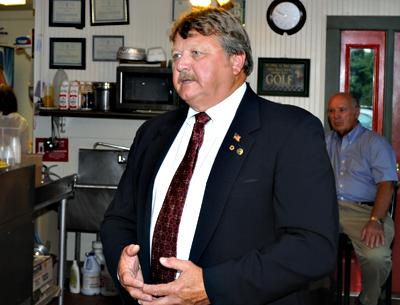Government Briefs 08.01.13
Government Briefs 08.01.13
East Hampton Town
Eyeing Cemetery Expansion
The East Hampton Town Board is pondering a land purchase that would allow for expansion of the Oak Lane Cemetery in Amagansett. Board members said Tuesday that, before deciding to proceed, they will first examine the status of other cemeteries in the town to see if additional space will be needed, review the costs, including purchase price and ongoing maintenance costs of the expansion, tally the potential proceeds from gravesite sales, and discuss who would be able to purchase the cemetery plots.
No to Wave Monitoring
A Rutgers University representative was sent packing on Tuesday when town board members advised him to look to New York State rather than town beaches for a place to put an antenna for a wave-monitoring system.
Ethan Handel of the Coastal Ocean Observation lab at the university’s Institute of Marine and Coastal Sciences had originally asked for permission to install a 35-foot transmission antenna and a smaller receiver antenna, anchored by thin guy wires in a 20-foot radius on dunes near the bathroom at Ditch Plain Beach in Montauk.
When Councilwoman Theresa Quigley objected vehemently, Mr. Handel worked with the town’s Planning Department to identify alternate sites for the radar equipment, which collects data on ocean currents and waves that are used by the Coast Guard and can provide information about coastal erosion.
On Tuesday, when he said Atlantic Avenue Beach in Amagansett seemed to be a “great location,” Ms. Quigley said that she would not approve the installation at any of the town’s public, lifeguarded beaches.
Considering LTV’s Contract
On Tuesday the town board discussed a new contract with LTV, the cable television station that is East Hampton Town’s public access provider. The station receives a portion of the franchise fees that Cablevision pays to the town, which are based on a percentage of what customers pay for Cablevision’s service.
In recent negotiations, Councilwoman Theresa Quigley said, LTV representatives appeared to agree to a new formula by which the station would receive a “base” amount from the town ($550,000 has been suggested) to cover basic services, and then would have to make a case proving the need for any additional requested money. Almost 90 percent of the budget for LTV, a nonprofit organization, is provided by the town, Ms. Quigley said. The town’s previous contract with LTV expired in November of last year.
A hearing will be held at Town Hall tonight at 7 regarding the town’s agreement with LTV to provide coverage of government meetings and educational programming. Members of the public can weigh in regarding the station’s performance.

